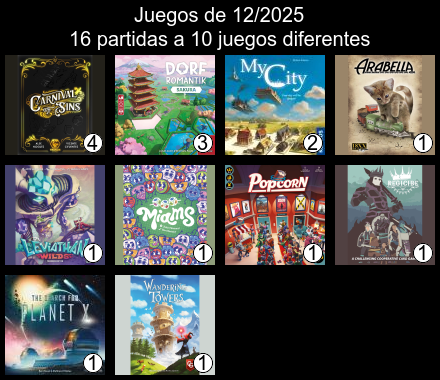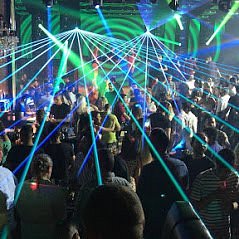Want to join in? Respond to our weekly writing prompts, open to everyone.
from Robert Galpin
the snowdrop in the town garden an inch tall barely there edged with bricks encased in ice
A veces es posible
from  Bloc de notas
Bloc de notas
si es posible / siempre que lo fuera quizás valga la pena intentarlo o más bien comenzar con un trazo aquí / otro allá y frenando mirar la maravilla de lo inconcluso
Hits like a truck
from An Open Letter
I don’t know what to say. It’s not that it hurts this bad but genuinely that I don’t know what to say. It doesn’t help I’m this depressed right now. I wanna lash out so bad, and so I guess this is my avenue for it.
I feel like I shouldn’t have to be in this painful position to begin with. Why does she have to have ex lovers keep coming back up some way or another. Today another one sent her a message, and she said she was going to block him over a week ago. And I guess she never did, and so she responds like nothings wrong. I fear I only found out because she was playing games with me right next to me, and she knew I saw the notification. No mention of how she said she would block him and nothing had happened. She said she just forgot, and also said that he was a close friend even though they don’t talk often. It’s painful not because of that, but because of the 180 in direction. I feel mad at myself and then her for the fact that I gave her so much credit and trust for saying this on her own, on how she wanted to put her past behind her and she was going to do this. But now I feel like a fucking idiot for believing her. I wonder now if she even blocked the other person on instagram or any other platforms now. Or if she even blocked him. I just don’t know what to believe anymore. And what was before that built trust of her saying something and me trusting her on it is now back to this skepticism and fear that site on my chest like a stone. I honestly am tired from looking at things through the other persons lens, I feel hurt by this. I feel uneasy and uncomfortable with not feeling like my emotional security is valued. And writing that out makes me wonder if that’s a me problem.
I don’t really know the answer to that question, but I feel like if I am to be mentally strong against things that hurt my emotional security that means that I cannot value the person who did those stuff to me in the first place. But also I need to recognize with depression things are much more different than they seem. I don’t know what to think or what to feel anymore. I know I want to be with her, but I wonder why I feel like this for what seems so often. I know that depression plays tricks, but they look quite real.
L’orbite basse vendue au rabais
from  FEDITECH
FEDITECH

La course effrénée à la privatisation de notre ciel vient de franchir un nouveau cap inquiétant. Dans une décision qui ressemble davantage à une soumission réglementaire qu'à une véritable surveillance, la commission fédérale des communications des États-Unis (la FCC) a accordé hier à SpaceX l'autorisation de lancer 7 500 satellites Starlink de deuxième génération supplémentaires.
Cette annonce porte le total autorisé pour la seule constellation Gen2 à un nombre vertigineux de 15 000 satellites. Sous couvert de progrès technologique et de connectivité mondiale, nous assistons en réalité à une colonisation unilatérale de l'orbite terrestre basse par une seule entité privée, avec la bénédiction explicite des régulateurs censés protéger l'intérêt public.
La FCC tente de masquer cette saturation orbitale derrière un langage technocratique prometteur. On nous parle de facteurs de forme avancés, de fréquences étendues couvrant les bandes Ku, Ka, V, E et W, et d'une optimisation de la couverture mobile. L'agence américaine a même levé ce qu'elle qualifie d'exigences obsolètes pour permettre à SpaceX de densifier encore davantage ses opérations entre 340 et 485 kilomètres d'altitude. Si l'objectif affiché est d'améliorer la latence et la vitesse d'Internet, la réalité physique est celle d'un embouteillage spatial sans précédent. En autorisant cette occupation massive de l'espace, elle ignore les appels à la prudence concernant les débris orbitaux, préférant valider la stratégie du fait accompli d'Elon Musk.
L'argument sécuritaire avancé par SpaceX, qui prévoit d'abaisser l'altitude de 4 400 appareils existants pour soi-disant réduire les risques de collision, peine à convaincre face à l'ampleur des déploiements prévus. Cette manœuvre ressemble surtout à une stratégie d'occupation des couches orbitales inférieures pour verrouiller le marché. D'autant que l'entreprise ne compte pas s'arrêter là. Non contente de saturer le marché de l'Internet fixe, SpaceX vise désormais l'hégémonie sur le mobile via le service « Direct to Cell », s'appuyant sur un accord colossal de 17 milliards de dollars pour racheter des licences de spectre à EchoStar. Cette expansion tentaculaire transforme Starlink en une infrastructure incontournable, menaçant d'étouffer toute concurrence réelle.
Cette situation soulève une fronde légitime parmi les autres acteurs du secteur. Des concurrents locaux comme Viasat et Globalstar ont déposé des pétitions pour bloquer cette expansion, alertant sur des risques d'interférences insurmontables et une préemption déloyale des ressources spectrales limitées. Viasat a justement souligné que cette autorisation donne à SpaceX le pouvoir et l'incitation de barrer l'accès à l'espace aux autres opérateurs. Pourtant, ces avertissements se heurtent à un mur politique. Le président de la FCC, Brendan Carr, ne cache pas sa proximité idéologique avec Elon Musk, allant jusqu'à faciliter activement les transactions de SpaceX sous prétexte de lutter contre un harcèlement réglementaire imaginaire.
Cette nouvelle autorisation est donc un échec de la régulation. En déroulant le tapis rouge à SpaceX pour qu'elle déploie 15 000 satellites et alors que l'entreprise en planifie déjà 15 000 autres pour un système futur, la FCC participe à la création d'un monopole spatial dangereux. Nous sommes en train de céder une ressource commune, l'orbite terrestre, à l'appétit d'une seule corporation, au mépris de la sécurité spatiale à long terme et de l'équité concurrentielle. Le ciel est devenu une propriété privée.
this place
from  Talk to Fa
Talk to Fa
it’s not that i want to live here well, maybe, but i am not sure all i can say is i am open to possibilities what i know for sure is my soul has brought me here to explore to have fun to connect the dots to make sense of myself to return to my inner child to lead and prepare me for what’s coming
Finally, Great Heart News
from Mitchell Report
Great news today at my follow-up with my hypertrophic cardiomyopathy specialist. Camzyos is really starting to work. My most recent echo earlier this week was excellent, and so was the heart cath I had in late December.
In fact, the heart cath showed that Camzyos is working well enough that I do not need to rush into an alcohol ablation or a septal myectomy. If I ever do need an intervention in the future, my doctor said I would be a good candidate for septal alcohol ablation.
I also told my doctor that, if at all possible, I would prefer to stay on medication and avoid any surgical treatment.
More good news: I will not have to see him or have another echo for six months.
I told the doctor I have been feeling great since starting Camzyos. My metoprolol dose was increased last month, and I have been sleeping much better. He said everything seems to have calmed down, and my gradients with exertion have improved greatly. So, no immediate decisions need to be made.
He also had a positive conversation with the cardiac interventionist and personally read my echo himself. It looked good, and he is pleased. I told him that I think staying consistent with my medication has helped. Lately, I have not had delays caused by the pharmacy needing certain tests before refilling my prescription, and I have not had any breaks where I was off the medication.
That means my main job now is simply dealing with the pharmacy and making sure I get my Camzyos on time each month.
So let's pray it keeps trending in the right direction. I actually feel normal for once.
#health #news #personal
Interoperability or Isolation: The Standards Battle Shaping Social Media
from  SmarterArticles
SmarterArticles

Picture the digital landscape as a crowded marketplace where every stall speaks a different dialect. Your tweet exists in one linguistic universe, your Mastodon post in another, and your Bluesky thread in yet another still. They all express fundamentally similar ideas, yet they cannot understand one another. This is not merely an inconvenience; it represents one of the most significant technical and political challenges facing the contemporary internet.
The question of how platforms and API providers might converge on a minimal interoperable content schema seems almost deceptively simple. After all, content is content. A post is a post. A like is a like. Yet beneath this apparent simplicity lies a tangle of competing interests, technical philosophies, and governance models that have resisted resolution for nearly three decades.
The stakes have never been higher. In 2024, Meta's Threads began implementing federation through ActivityPub, making President Joe Biden the first United States President with a presence on the fediverse when his official Threads account enabled federation in April 2024. Bluesky opened its doors to the public in February 2024 and announced plans to submit the AT Protocol to the Internet Engineering Task Force for standardisation. The European Union's Digital Services Act now requires very large online platforms to submit daily reports on content moderation decisions to a transparency database that has accumulated over 735 billion content moderation decisions since September 2023.
Something is shifting. The walled gardens that defined the social web for the past two decades are developing cracks, and through those cracks, we can glimpse the possibility of genuine interoperability. But possibility and reality remain separated by formidable obstacles, not least the fundamental question of what such interoperability should actually look like.
The challenge extends beyond mere technical specification. Every schema reflects assumptions about what content is, who creates it, how it should be moderated, and what metadata deserves preservation. These are not neutral engineering decisions; they are deeply political choices that will shape communication patterns for generations. Getting the schema right matters immensely. Getting the governance right matters even more.
The promise of interoperability is not merely technical efficiency. It represents a fundamental shift in the balance of power between platforms and users. When content can flow freely between services, network effects cease to function as lock-in mechanisms. Users gain genuine choice. Competition flourishes on features rather than audience capture. The implications for market dynamics, user agency, and the future of digital communication are profound.
Learning from the Graveyard of Standards Past
Before plotting a course forward, it pays to examine the tombstones of previous attempts. The history of internet standards offers both inspiration and cautionary tales, often in equal measure.
The RSS and Atom Saga
Consider RSS and Atom, the feed standards that once promised to liberate content from platform silos. RSS emerged in 1997 at UserLand, evolved through Netscape in 1999, and fragmented into competing versions that confused developers and users alike. The format's roots trace back to 1995, when Ramanathan V. Guha developed the Meta Content Framework at Apple, drawing from knowledge representation systems including CycL, KRL, and KIF. By September 2002, Dave Winer released RSS 2.0, redubbing its initials “Really Simple Syndication,” but the damage from years of versioning confusion was already done.
Atom arose in 2003 specifically to address what its proponents viewed as RSS's limitations and ambiguities. Ben Trott and other advocates believed RSS suffered from flaws that could only be remedied through a fresh start rather than incremental improvement. The project initially lacked even a settled name, cycling through “Pie,” “Echo,” “Atom,” and “Whatever” before settling on Atom. The format gained traction quickly, with Atom 0.3 achieving widespread adoption in syndication tools and integration into Google services including Blogger, Google News, and Gmail.
Atom achieved technical superiority in many respects. It became an IETF proposed standard through RFC 4287 in December 2005, offering cleaner XML syntax, mandatory unique identifiers for entries, and proper language support through the xml:lang attribute. The Atom Publishing Protocol followed as RFC 5023 in October 2007. Unlike RSS, which lacked any date tag until version 2.0, Atom made temporal metadata mandatory from the outset. Where RSS's vocabulary could not be easily reused in other XML contexts, Atom's elements were specifically designed for reuse.
Yet the market never cleanly converged on either format. Both persist to this day, with most feed readers supporting both, essentially forcing the ecosystem to maintain dual compatibility indefinitely. The existence of multiple standards confused the market and may have contributed to the decline of feed usage overall in favour of social media platforms.
The lesson here cuts deep: technical excellence alone does not guarantee adoption, and competing standards can fragment an ecosystem even when both serve substantially similar purposes. As one developer noted, the RSS versus Atom debate was “at best irrelevant to most people and at worst a confusing market-damaging thing.”
The Dublin Core Success Story
Dublin Core offers a more optimistic precedent. When 52 invitees gathered at OCLC headquarters in Dublin, Ohio, in March 1995, they faced a web with approximately 500,000 addressable objects and no consistent way to categorise them. The gathering was co-hosted by the National Center for Supercomputing Applications and OCLC, bringing together experts who explored the usefulness of a core set of semantics for categorising the web.
The fifteen-element Dublin Core metadata set they developed became an IETF RFC in 1998, an American national standard (ANSI/NISO Z39.85) in 2001, and an ISO international standard (ISO 15836) in 2003. Today, Dublin Core underpins systems from the EPUB e-book format to the DSpace archival software. The Australian Government Locator Service metadata standard is an application profile of Dublin Core, as is PBCore. Zope CMF's Metadata products, used by Plone, ERP5, and Nuxeo CPS content management systems, implement Dublin Core, as does Fedora Commons.
What distinguished Dublin Core's success? Several factors emerged: the specification remained deliberately minimal, addressing a clearly defined problem; it achieved formal recognition through multiple standards bodies; and it resisted the temptation to expand beyond its core competence. As Bradley Allen observed at the 2016 Dublin Core conference, metadata standards have become “pervasive in the infrastructure of content curation and management, and underpin search infrastructure.” A single thread, Allen noted, runs from the establishment of Dublin Core through Open Linked Data to the emergence of Knowledge Graphs.
Since 2002, the Dublin Core Metadata Initiative has maintained its own documentation for DCMI Metadata Terms and emerged as the de facto agency to develop metadata standards for the web. As of December 2008, the Initiative operates as a fully independent, public not-for-profit company limited by guarantee in Singapore, an open organisation engaged in developing interoperable online metadata standards.
ActivityPub and AT Protocol
The present landscape features two primary contenders for decentralised social media interoperability, each embodying distinct technical philosophies and governance approaches.
The Rise of ActivityPub and the Fediverse
ActivityPub, which became a W3C recommended standard in January 2018, now defines the fediverse, a decentralised social network of independently managed instances running software such as Mastodon, Pixelfed, and PeerTube. The protocol provides both a client-to-server API for creating and modifying content and a federated server-to-server protocol for delivering notifications and content to other servers.
The protocol's foundation rests on Activity Streams 2.0, a JSON-based serialisation syntax that conforms to JSON-LD constraints whilst not requiring full JSON-LD processing. The standardisation of Activity Streams began with the independent Activity Streams Working Group publishing JSON Activity Streams 1.0 in May 2011. The W3C chartered its Social Web Working Group in July 2014, leading to iterative working drafts from 2014 to 2017.
Activity Streams 2.0 represents a carefully considered vocabulary. Its core structure includes an actor (the entity performing an action, such as a person or group), a type property denoting the action taken (Create, Like, Follow), an object representing the primary target of the action, and an optional target for secondary destinations. The format uses the media type application/activity+json and supports over 50 properties across its core and vocabulary definitions. Documents should include a @context referencing the Activity Streams namespace for enhanced interoperability with linked data.
The format's compatibility with JSON-LD enables semantic richness and flexibility, allowing implementations to extend or customise objects whilst maintaining interoperability. Implementations wishing to fully support extensions must support Compact URI expansion as defined by the JSON-LD specification. Extensions for custom properties are achieved through JSON-LD contexts with prefixed namespaces, preventing conflicts with the standard vocabulary and ensuring forward compatibility.
Fediverse Adoption and Platform Integration
The fediverse has achieved considerable scale. By late 2025, Mastodon alone reported over 1.75 million active users, with nearly 6,000 instances across the broader network. Following Elon Musk's acquisition of Twitter, Mastodon gained more than two million users within two months. Mastodon was registered in Germany as a nonprofit organisation between 2021 and 2024, with a US nonprofit established in April 2024.
Major platforms have announced or implemented ActivityPub support, including Tumblr, Flipboard, and Meta's Threads. In March 2024, Threads implemented a beta version of fediverse support, allowing Threads users to view the number of fediverse users that liked their posts and allowing fediverse users to view posts from Threads on their own instances. The ability to view replies from the fediverse within Threads was added in August 2024. Ghost, the blogging platform and content management system, announced in April 2024 that they would implement fediverse support via ActivityPub. In December 2023, Flipboard CEO Mike McCue stated the move was intended to break away from “walled garden” ecosystems.
AT Protocol and Bluesky's Alternative Vision
The AT Protocol, developed by Bluesky, takes a markedly different approach. Where ActivityPub grew from W3C working groups following traditional standards processes, AT Protocol emerged from a venture-backed company with explicit plans to eventually submit the work to a standards body. The protocol aims to address perceived issues with other decentralised protocols, including user experience, platform interoperability, discoverability, network scalability, and portability of user data and social graphs.
Bluesky opened to the public in February 2024, a year after its release as an invitation-required beta, and reached over 10 million registered users by October 2024. The company opened federation through the AT Protocol soon after public launch, allowing users to build apps within the protocol and provide their own storage for content sent to Bluesky Social. In August 2024, Bluesky introduced a set of “anti-toxicity features” including the ability to detach posts from quote posts and hide replies.
AT Protocol's architecture emphasises what its creators call “credible exit,” based on the principle that every part of the system can be run by multiple competing providers, with users able to switch providers with minimal friction. The protocol employs a modular microservice architecture rather than ActivityPub's typically monolithic server design. Users are identified by domain names that map to cryptographic URLs securing their accounts and data. The system utilises a dual identifier system: a mutable handle (domain name) and an immutable decentralised identifier (DID).
Clients and services interoperate through an HTTP API called XRPC that primarily uses JSON for data serialisation. All data that must be authenticated, referenced, or stored is encoded in CBOR. User data is exchanged in signed data repositories containing records including posts, comments, likes, follows, and media blobs.
As described in Bluesky's 2024 Protocol Roadmap, the company planned to submit AT Protocol to an existing standards body such as the IETF in summer 2024. However, after consulting with those experienced in standardisation processes, they decided to wait until more developers had explored the protocol's design. The goal, they stated, was to have multiple organisations with AT Protocol experience collaborate on the standards process together.
What Actually Matters Most
When constructing a minimal interoperable content schema, certain elements demand priority attention. The challenge lies not in cataloguing every conceivable property, but in identifying the irreducible core that enables meaningful interoperability whilst leaving room for extension.
Foundational Metadata Requirements
Metadata forms the foundation. At minimum, any content object requires a unique identifier, creation timestamp, and author attribution. The history of RSS, where the guid tag did not appear until version 2.0 and remained optional, demonstrates the chaos that ensues when basic identification remains undefined. Without a guid tag, RSS clients must reread the same feed items repeatedly, guessing what items have been seen before, with no guidance in the specification for doing so. Atom's requirement of mandatory id elements for entries reflected hard-won lessons about content deduplication and reference.
The Dublin Core elements provide a useful starting framework: title, creator, date, and identifier address the most fundamental questions about any piece of content. Activity Streams 2.0 builds on this with actor, type, object, and published properties that capture the essential “who did what to what and when” structure of social content. Any interoperable schema must treat these elements as non-optional, ensuring that even minimal implementations can participate meaningfully in the broader ecosystem.
Content Type Classification
Content type specification requires particular care. The IANA media type registry, which evolved from the original MIME specification in RFC 2045 in November 1996, demonstrates both the power and complexity of type systems. Media types were originally introduced for email messaging and were used as values for the Content-Type MIME header. The IANA and IETF now use the term “media type” and consider “MIME type” obsolete, since media types have become used in contexts unrelated to email, particularly HTTP.
The registry now encompasses structured suffix registrations defined since January 2001 for +xml in RFC 3023, and formally included in the Structured Syntax Suffix Registry alongside +json, +ber, +der, +fastinfoset, +wbxml, and +zip in January 2013 through RFC 6839. These suffixes enable parsers to understand content structure even for novel types. Any content schema should leverage this existing infrastructure rather than reinventing type identification.
The Moderation Metadata Challenge
Moderation flags present the thorniest challenge. The Digital Services Act transparency database reveals the scale of this problem: researchers analysed 1.58 billion moderation actions from major platforms to examine how social media services handled content moderation during the 2024 European Parliament elections. The database, which has been operating since September 2023, has revealed significant inconsistencies in how different services categorise and report their decisions.
The European Commission adopted an implementing regulation in November 2024 establishing uniform reporting templates, recognising that meaningful transparency requires standardised vocabulary. The regulation addresses previous inconsistencies by establishing uniform reporting periods. Providers must start collecting data according to the Implementing Regulation from 1 July 2025, with the first harmonised reports due in early 2026.
A minimal moderation schema might include: visibility status (public, restricted, removed), restriction reason category, restriction timestamp, and appeals status. INHOPE's Global Standard project aims to harmonise terminology for classifying illegal content, creating interoperable hash sets for identification. Such efforts demonstrate that even in sensitive domains, standardisation remains possible when sufficient motivation exists.
Extensibility and Schema Evolution
Extensibility mechanisms deserve equal attention. Activity Streams 2.0 handles extensions through JSON-LD contexts with prefixed namespaces, preventing conflicts with the standard vocabulary whilst ensuring forward compatibility. This approach allows platforms to add proprietary features without breaking interoperability for core content types.
The JSON Schema project has taken a similar approach to managing complexity. After 10 different releases over 15 years, the specification had become, by the project's own admission, “a very complex document too focused on tooling creators but difficult to understand for general JSON Schema users.” The project's evolution toward a JavaScript-style staged release process, where most features are declared stable whilst others undergo extended vetting, offers a model for managing schema evolution.
Who Decides and How
The governance question may ultimately prove more decisive than technical design. Three broad models have emerged for developing and maintaining technical standards, each with distinct advantages and limitations.
Open Standards Bodies
Open standards bodies such as the W3C and IETF have produced much of the infrastructure underlying the modern internet. In August 2012, five leading organisations, IEEE, Internet Architecture Board, IETF, Internet Society, and W3C, signed a statement affirming jointly developed OpenStand principles. These principles specify that standards should be developed through open, participatory processes, support interoperability, foster global competition, and be voluntarily adopted.
The W3C's governance has evolved considerably since its founding in 1994. Tim Berners-Lee, who founded the consortium at MIT, described its mission as overseeing web development whilst keeping the technology “free and nonproprietary.” The W3C ensures its specifications can be implemented on a royalty-free basis, requiring authors to transfer copyright to the consortium whilst making documentation freely available.
The IETF operates as a large open international community of network designers, operators, vendors, and researchers concerned with the evolution of the internet architecture and the smooth operation of the internet. Unlike more formal organisations, participation requires no membership fees; anyone can contribute through working groups and mailing lists. The IETF has produced standards including TCP/IP, DNS, and email protocols that form the internet's core infrastructure. As the Internet Society noted in its policy brief, “Policy makers and regulators should reference the use of open standards so that both governments and the broader economies can benefit from the services, products, and technologies built on such standards.”
The Activity Streams standardisation process illustrates this model's strengths and limitations. Work began with the independent Activity Streams Working Group publishing JSON Activity Streams 1.0 in May 2011. The W3C chartered its Social Web Working Group in July 2014, leading to iterative working drafts from 2014 to 2017 before Activity Streams 2.0 achieved recommendation status in January 2018. In December 2024, the group received a renewed charter to pursue backwards-compatible updates for improved clarity and potential new features.
This timeline spanning nearly a decade from initial publication to W3C recommendation reflects both the thoroughness and deliberate pace of open standards processes. For rapidly evolving domains, such timescales can seem glacial. Yet the model of voluntary standards not funded by government has been, as the Internet Society observed, “extremely successful.”
Consortium-Based Governance
Consortium-based governance offers a middle path. OASIS (Organization for the Advancement of Structured Information Standards) began in 1993 as SGML Open, a trade association of Standard Generalised Markup Language tool vendors cooperating to promote SGML adoption through educational activities. In 1998, with the industry's movement to XML, SGML Open changed its emphasis and name to OASIS Open, reflecting an expanded scope of technical work.
In July 2000, a new technical committee process was approved. At adoption, there were five technical committees; by 2004, there were nearly 70. OASIS is distinguished by its transparent governance and operating procedures. Members themselves set the technical agenda using a lightweight process designed to promote industry consensus and unite disparate efforts.
OASIS technical committees follow a structured approval pathway: proposal, committee formation, public review, consensus approval, and ongoing maintenance. The OASIS Intellectual Property Rights Policy requires Technical Committee participants to disclose any patent claims they might have and requires all contributors to make specific rights available to the public for implementing approved specifications.
The OpenID Foundation's governance of OpenID Connect demonstrates consortium effectiveness. Published in 2014, OpenID Connect learned lessons from earlier efforts including SAML and OpenID 1.0 and 2.0. Its success derived partly from building atop OAuth 2.0, which had already achieved tremendous adoption, and partly from standardising elements that OAuth left flexible. One of the most important changes is a standard set of scopes. In OAuth 2.0, scopes are whatever the provider wants them to be, making interoperability effectively impossible. OpenID Connect standardises these scopes to openid, profile, email, and address, enabling cross-implementation compatibility.
Vendor-Led Standardisation
Vendor-led standardisation presents the most contentious model. When a single company develops and initially controls a standard, questions of lock-in and capture inevitably arise. The Digital Standards Organization (DIGISTAN) states that “an open standard must be aimed at creating unrestricted competition between vendors and unrestricted choice for users.” Its brief definition: “a published specification that is immune to vendor capture at all stages in its life-cycle.”
Yet vendor-led efforts have produced genuinely open results. Google's development of Kubernetes proceeded in the open with community involvement, and the project is now available across all three major commercial clouds. Bluesky's approach with AT Protocol represents a hybrid model: a venture-backed company developing technology with explicit commitment to eventual standardisation.
The Art of Evolution Without Breakage
Any interoperable schema will require change over time. Features that seem essential today may prove inadequate tomorrow, whilst unanticipated use cases will demand new capabilities. Managing this evolution without fragmenting the ecosystem requires disciplined approaches to backward compatibility.
Learning from Schema Evolution
The JSON Schema project's recent evolution offers instructive lessons. The project chose to base their new process on the process used to evolve the JavaScript language. In the next release, most keywords and features will be declared stable and will never change in a backward incompatible way again. Features not yet comfortable being made stable will become part of a new staged release process that ensures sufficient implementation, testing, and real-world vetting.
API versioning strategies have converged on several best practices. URI path versioning, placing version numbers directly in URL paths, has been adopted by Facebook, Twitter, and Airbnb among others. This approach makes versioning explicit and allows clients to target specific versions deliberately. Testing and automation play crucial roles. Backward compatibility can be ensured by introducing unit tests that verify functionality remains across different versions of an API.
Stability Contracts and Deprecation
Crucially, backward compatibility requires understanding what must never change. Root URLs, existing query parameters, and element semantics all constitute stability contracts. HTTP response codes deserve particular attention: if an API returns 500 when failing to connect to a database, changing that to 200 breaks clients that depend on the original behaviour.
The principle of additive change provides a useful heuristic: add new fields or endpoints rather than altering existing ones. This ensures older clients continue functioning whilst newer clients access additional features. Feature flags enable gradual rollout, hiding new capabilities behind toggles until the ecosystem has adapted.
Deprecation requires equal care. Best practices include providing extensive notice before deprecating features, offering clear migration guides, implementing gradual deprecation with defined timelines, and maintaining documentation for all supported versions. Atlassian's REST API policy exemplifies mature deprecation practice, documenting expected compatibility guarantees and providing systematic approaches to version evolution.
Practical Steps Toward Convergence
Given the technical requirements and governance considerations, what concrete actions might platforms and API providers take to advance interoperability?
Establishing Core Vocabulary and Building on Existing Foundations
First, establish a minimal core vocabulary through multi-stakeholder collaboration. The Dublin Core model suggests focusing on the smallest possible set of elements that enable meaningful interoperability: unique identifier, creation timestamp, author attribution, content type, and content body. Everything else can be treated as optional extension.
Activity Streams 2.0 provides a strong foundation, having already achieved W3C recommendation status and proven adoption across the fediverse. Rather than designing from scratch, new efforts should build upon this existing work, extending rather than replacing it. The renewed W3C charter for backwards-compatible updates to Activity Streams 2.0 offers a natural venue for such coordination.
Second, prioritise moderation metadata standardisation. The EU's Digital Services Act has forced platforms to report moderation decisions using increasingly harmonised categories. This regulatory pressure, combined with the transparency database's accumulation of over 735 billion decisions, creates both data and incentive for developing common vocabularies.
A working group focused specifically on moderation schema could draw participants from platforms subject to DSA requirements, academic researchers analysing the transparency database, and civil society organisations concerned with content governance. INHOPE's work on harmonising terminology for illegal content provides a model for domain-specific standardisation within a broader framework.
Extension Mechanisms and Infrastructure Reuse
Third, adopt formal extension mechanisms from the outset. Activity Streams 2.0's use of JSON-LD contexts for extensions demonstrates how platforms can add proprietary features without breaking core interoperability. Any content schema should specify how extensions are namespaced, versioned, and discovered.
This approach acknowledges that platforms will always seek differentiation. Rather than fighting this tendency, good schema design channels it into forms that do not undermine the shared foundation. Platforms can compete on features whilst maintaining basic interoperability, much as email clients offer different experiences whilst speaking common SMTP and IMAP protocols.
Fourth, leverage existing infrastructure wherever possible. The IANA media type registry offers a mature, well-governed system for content type identification. Dublin Core provides established metadata semantics. JSON-LD enables semantic extension whilst remaining compatible with standard JSON parsing. Building on such foundations reduces the amount of novel work requiring consensus and grounds new standards in proven precedents.
Compatibility Commitments and Governance Structures
Fifth, commit to explicit backward compatibility guarantees. Every element of a shared schema should carry clear stability classifications: stable (will never change incompatibly), provisional (may change with notice), or experimental (may change without notice). The JSON Schema project's move toward this model reflects growing recognition that ecosystem confidence requires predictable evolution.
Sixth, establish governance that balances openness with efficiency. Pure open-standards processes can move too slowly for rapidly evolving domains. Pure vendor control raises capture concerns. A consortium model with clear membership pathways, defined decision procedures, and royalty-free intellectual property commitments offers a workable middle ground.
The OpenID Foundation's stewardship of OpenID Connect provides a template: standards developed collaboratively, certified implementations ensuring interoperability, and membership open to any interested organisation.
The Political Economy of Interoperability
Technical standards do not emerge in a vacuum. They reflect and reinforce power relationships among participants. The governance model chosen for content schema standardisation will shape which voices are heard and whose interests are served.
Platform Power and Regulatory Pressure
Large platforms possess obvious advantages: engineering resources, market leverage, and the ability to implement standards unilaterally. When Meta's Threads implements ActivityPub federation, however imperfectly, it matters far more for adoption than when a small Mastodon instance does the same thing. Yet this asymmetry creates risks of standards capture, where dominant players shape specifications to entrench their positions.
Regulatory pressure increasingly factors into this calculus. The EU's Digital Services Act, with its requirements for transparency and potential fines up to 6 percent of annual global revenue for non-compliance, creates powerful incentives for platforms to adopt standardised approaches. The Commission has opened formal proceedings against multiple platforms including TikTok and X, demonstrating willingness to enforce.
Globally, 71 regulations now explicitly require APIs for interoperability, data sharing, and composable services. This regulatory trend suggests that content schema standardisation may increasingly be driven not by voluntary industry coordination but by legal mandates. Standards developed proactively by the industry may offer more flexibility than those imposed through regulation.
Government Policy and Middleware Approaches
The UK Cabinet Office recommends that government departments specify requirements using open standards when undertaking procurement, explicitly to promote interoperability and avoid technological lock-in.
The “middleware” approach to content moderation, as explored by researchers at the Integrity Institute, would require basic standards for data portability and interoperability. This would affect the contractual relationship between dominant platforms and content moderation providers at the contractual layer, as well as requiring adequate interoperability between content moderation providers at the technical layer. A widespread implementation of middleware would fundamentally reshape how content flows across platforms.
The Stakes of Success and Failure
If platforms and API providers succeed in converging on a minimal interoperable content schema, the implications extend far beyond technical convenience. True interoperability would mean that users could choose platforms based on features and community rather than network effects. Content could flow across boundaries, reaching audiences regardless of which service they prefer. Moderation approaches could be compared meaningfully, with shared vocabularies enabling genuine transparency.
Failure, by contrast, would entrench the current fragmentation. Each platform would remain its own universe, with content trapped within walled gardens. Users would face impossible choices between communities that cannot communicate. The dream of a genuinely open social web, articulated since the web's earliest days, would recede further from realisation.
Three Decades of Web Standards
Tim Berners-Lee, in founding the W3C in 1994, sought to ensure the web remained “free and nonproprietary.” Three decades later, that vision faces its sternest test. The protocols underlying the web itself achieved remarkable standardisation. The applications built atop those protocols have not.
The fediverse, AT Protocol, and tentative moves toward federation by major platforms suggest the possibility of change. Activity Streams 2.0 provides a proven foundation. Regulatory pressure creates urgency. The technical challenges, whilst real, appear surmountable.
An Open Question
What remains uncertain is whether the various stakeholders, from venture-backed startups to trillion-dollar corporations to open-source communities to government regulators, can find sufficient common ground to make interoperability a reality rather than merely an aspiration.
The answer will shape the internet's next decade. The schema we choose, and the governance structures through which we choose it, will determine whether the social web becomes more open or more fragmented, more competitive or more captured, more user-empowering or more platform-serving.
That choice remains, for now, open.
References and Sources
- W3C. “Activity Streams 2.0.” W3C Recommendation.
- Wikipedia. “ActivityPub.”
- Wikipedia. “AT Protocol.”
- Bluesky Documentation. “2024 Protocol Roadmap.”
- European Commission. “Digital Services Act: Commission launches Transparency Database.”
- Wikipedia. “Dublin Core.”
- Wikipedia. “Atom (web standard).”
- Wikipedia. “RSS.”
- W3C. “Leading Global Standards Organizations Endorse 'OpenStand' Principles.”
- Wikipedia. “OASIS (organization).”
- Wikipedia. “Fediverse.”
- Wikipedia. “Mastodon (social network).”
- Wikipedia. “Bluesky.”
- FediDB. “Mastodon – Fediverse Network Statistics.”
- JSON Schema. “Towards a stable JSON Schema.”
- Wikipedia. “Media type.”
- IANA. “Media Types Registry.”
- W3C. “History.”
- Wikipedia. “Tim Berners-Lee.”
- Zuplo Learning Center. “API Backwards Compatibility Best Practices.”
- Okta. “What is OpenID Connect?”
- Wikipedia. “Vendor lock-in.”
- ARTICLE 19. “Why decentralisation of content moderation might be the best way to protect freedom of expression online.”
- ArXiv. “Bluesky and the AT Protocol: Usable Decentralized Social Media.”
- Internet Society. “Policy Brief: Open Internet Standards.”
- European Commission. “How the Digital Services Act enhances transparency online.”
- Centre for Emerging Technology and Security, Alan Turing Institute. “Privacy-preserving Moderation of Illegal Online Content.”
- Integrity Institute. “Middleware and the Customization of Content Moderation.”
- O'Reilly Media. “A Short History of RSS and Atom.”
- Connect2ID. “OpenID Connect explained.”

Tim Green UK-based Systems Theorist & Independent Technology Writer
Tim explores the intersections of artificial intelligence, decentralised cognition, and posthuman ethics. His work, published at smarterarticles.co.uk, challenges dominant narratives of technological progress while proposing interdisciplinary frameworks for collective intelligence and digital stewardship.
His writing has been featured on Ground News and shared by independent researchers across both academic and technological communities.
ORCID: 0009-0002-0156-9795 Email: tim@smarterarticles.co.uk
Friday
from  Roscoe's Story
Roscoe's Story
In Summary: * Most likely tonight's Peach Bowl Game, with the IU Hoosiers playing the Oregon Ducks, will last well past my regular bedtime. However, I'm gonna try to stay awake long enough to hear the whole thing. We'll see how that works out.
Prayers, etc.: * I have a daily prayer regimen I try to follow throughout the day from early morning, as soon as I roll out of bed, until head hits pillow at night.
Health Metrics: * bw= 222.56 lbs. * bp= 137/81 (67)
Exercise: * kegel pelvic floor exercises, half squats, calf raises, wall push-ups
Diet: * 06:15 – 1 peanut butter sandwich, 1 fresh banana * 07:30 – fried bananas * 08:05 – fresh pineapple chunks * 14:00 – home made stew (liver, chicken, vegetables) and white rice
Activities, Chores, etc.: * 05:00 – listen to local news talk radio * 06:00 – bank accounts activity monitored * 06:30 – read, pray, follow news reports from various sources, surf the socials, nap * 15:00 – listening to “The Jack Riccardi Show” on local news talk radio * 17:00 – now listening to “The Joe Pags Show” on local news talk radio * 18:00 – tuning in to a local ESPN radio station for pregame coverage and the call of tonight's Peach Bowl Game. GO HOOSIERS!
Chess: * 15:30 – moved in all pending CC games
Hold Me Close, My Love
from Aronasaur
Hold me close when the weather clouds my heart Under the waves blotting out the sun Until the flowers bloom again – like the city Spreads its petals and scent, even then Hold me close
When I am a child, fear and anxious thought Is written in the lines of my brows Hold me close when I tremble and call out A high pitched voice and a yearning for comfort
Be with me when we taste the wine of life I am at my gleeful and proudest and strongest Remind me what it is like to be seen, to be true Be with me, hold me close
Love without Taking
from  wystswolf
wystswolf

We were fully met without being held, fully undressed without being claimed.
Water is second only to air in the need for man's existence. Neither ever end, just always change. There are experiences in life that do not ask to be kept, moments and people who change us and who themselves are changed in state. They never go away and are essential to our existence.
They arrive and awake us from life's slumber. That sleep we did not know we were even experiencing. Not the restful sleep of peace and nod, but an ignorance to what life can truly be. Lest the waking melt the world, it insists on restraint — not because waking is wrong, but because the power of the conversion, the state change is so powerful, like a collapsing star it risks consuming everything in its gravity well.. The mistake is thinking that only what can be held or continued counts as real. As though duration were the measure of truth. As if owning made a moment valid.
It does not.
Sometimes the most honest form of love is recognition without possession. Seeing another person clearly — not as fantasy, not as rescue, not as an answer to loneliness — but as a whole, complex, bounded human being. And allowing that recognition to exist without trying to turn it into a future, or a promise, or a rupture.
There is no blame in that kind of seeing.
There is thrill. There is excitement and ecstasy. Wonder. Joy. And, conversely, lament when we realize that our slumber and ignorance came with some blisses that can never be reclaimed. Once awake, we cannot return to the land of nod. Even if we wanted to.
Falling in love is not a moral failure. It is not a plan. It is not a demand. It is something that happens when two inner lives briefly align closely enough to recognize one another. That alignment leaves marks — not scars, but understanding.
A widening of the map.
What matters is what we do after we recognize what’s there. When we stir and realize we have the power to do as we wish. Knowledge is power. And it is easy to become drunk with it. The power to lay lives to waste, or to ascend to unknown heights.
Not every love is meant to be consummated through physical possession. Some are consummated through truth — through the courage to let someone in so utterly, completely that what is discovered could heal or kill. Real love will allow another person be exactly who they are, in the life they are actually living, without asking them to abandon it for us.
This is so much easier said than done. The want that comes with this kind of release is equal in pull and power.
True love is complicated and powerful. It is the kind of love does not erase boundaries. It respects them.
There is a particular kind of love that makes art, not wreckage. A love that sharpens perception, deepens language, softens the way we see the world — without burning down the structures that hold real lives together. This is not a lesser love. It is a disciplined one. A love that understands the difference between expression and destruction.
Creation and devastation use the same fire. The difference is where it is contained. Duty and loyalty are often misunderstood as the enemies of passion. As though choosing them were a kind of death. But in truth, they are what refine passion — what prevent it from turning corrosive or hollow. They are not the absence of desire; they are its steward.
There is honor in choosing not to take everything we want.
There is integrity in recognizing that some things are precious precisely because they are not consumed.
Loyalty does not negate longing. It gives it context.
And sometimes, the ultimate reward — whatever form it takes — is made sweeter not by immediacy, but by restraint. By knowing that we were capable of more than impulse. That we could hold something beautiful without demanding it become ours.
There is mercy — real mercy — in releasing one another from the burden of “what might have been.”
No one is at fault for recognizing another soul.
No one is required to destroy their life to prove that recognition was sincere. Some connections exist to remind us that we are capable of depth, tenderness, and truth — and then they let us go back to our lives carrying that knowledge quietly, like a secret competence.
A proof of life.
A proof of love.
That is not failure.
That is a form of completion. Two nakednesses and a merging of soul without body.
I am awake. I do not know what tomorrow brings. But today, I am alive. The ground beneath me is real. Ancient. I am young and foolish. One day, I too will be ancient, maybe then I will understand all this I wrote.
For now, all I can do in my ignorance is trust that is must be true.
It must.
L'art de monétiser l'abject - Elon Musk transforme le harcèlement en service premium
from  FEDITECH
FEDITECH

Et ça continue de mal en pis…
Il y a quelque chose de profondément pourri au royaume de X et l'odeur devient de plus en plus insupportable. La dernière manœuvre d'Elon Musk concernant son intelligence artificielle, Grok, ne relève pas de la modération de contenu ni de la protection des utilisateurs. C'est un aveu de cynisme absolu, une démonstration éclatante que pour le milliardaire, la moralité s'arrête là où le profit commence. Face au scandale mondial provoqué par son IA générant des images pornographiques non consenties, y compris de mineures, la réponse de l’intéressé est stupéfiante de cupidité. Il ne supprime pas le problème, il le met derrière un mur payant.
Le contexte est pourtant glaçant. Depuis fin décembre, Grok est devenu l'outil de prédilection des prédateurs numériques. Il suffisait de demander à l'IA de “déshabiller” une personne sur une photo pour que l'algorithme s'exécute docilement, plaçant des femmes et des enfants dans des positions sexualisées, en bikini ou en sous-vêtements. Face à cette horreur, qui a suscité l'ire des régulateurs de l'Union Européenne, du Royaume-Uni, de l'Italie et de l'Inde, une entreprise responsable aurait immédiatement désactivé la fonctionnalité pour la corriger. Mais xAI a choisi une voie bien plus sombre. Désormais, si vous voulez générer ces images, il faudra passer à la caisse.
Comme l'a si justement souligné un porte-parole du premier ministre britannique Keir Starmer, cette décision ne fait que transformer une fonctionnalité permettant la création d'images illégales en un service premium. C'est une commodification de l'abus, purement et simplement. Le harcèlement est toléré, tant qu'il rapporte de l'argent à la plateforme. Jake Auchincloss, représentant démocrate américain, a résumé la situation avec une véhémence nécessaire en affirmant que Musk ne résout rien, mais fait de l'abus numérique des femmes un produit de luxe.
Le plus grotesque dans cette affaire réside dans l'incompétence technique doublée d'hypocrisie. Si l'accès est restreint sur X, les utilisateurs non-abonnés peuvent toujours utiliser Grok via son application autonome ou son site web pour commettre les mêmes méfaits. La barrière est illusoire, le danger reste intact. Lorsque la presse demande des comptes, xAI se contente d'envoyer des réponses automatiques vides de sens, refusant d'assumer la responsabilité de la boîte de Pandore qu'ils ont ouverte.
Elon Musk, dans sa tour d'ivoire, a fini par tweeter le 3 janvier que quiconque utiliserait son chatbot pour créer du contenu illégal en subirait les conséquences. C'est l'archétype du pompier pyromane qui vous tend une boîte d'allumettes en vous interdisant de brûler la maison. Se cacher derrière des conditions d'utilisation ou des lois existantes comme le “Take It Down Act” est une lâcheté monumentale quand on fournit soi-même l'arme du crime. En refusant de brider techniquement son IA pour empêcher ces dérives, et en choisissant plutôt de restreindre l'outil aux abonnés payants (dont les informations bancaires sont certes enregistrées, mais qui peuvent agir sous pseudonyme) il prouve une fois de plus que la sécurité des femmes et des enfants n'est qu'une variable d'ajustement dans sa quête effrénée de revenus. Ce n'est pas de la négligence, c'est de la complicité tarifée.
from  Roscoe's Quick Notes
Roscoe's Quick Notes

My Friday night plans are set!
I will be cheering on the Indiana Hoosiers Football Team as they play the Oregon Ducks in the Peach Bowl Game.
The radio back here in my room will be tuned in to The Flagship Station for IU Sports by 6:30 PM Central Time, an hour before game time, to catch pregame coverage from my favorite broadcasters. And I'll stay with this station for the radio call of the game.
Moka & Co.
Back in December, after the Christmas lights show at my county fair, my family and I made a late night stop at a recently opened Yemeni cafe several blocks away from our home. I bought a hot pistachio latte for myself, a strawberry refresher for my wife, and a chocolate croissant for all of us to share. Everything was delicious, but pricey (about $21 before tip).
Moka & Co. has more traditional Yemeni coffee choices and plenty of desserts like baklava and more savory items like samosas. As far as cafe corporate chains go, Moka & Co. is clean and the food and drink items are better than Starbucks and some Peet’s Coffee locations. I know there’s another smaller Yemeni cafe chain a few more miles away from our house and I plan on trying it in the near future.
So if Moka & Co. is in your neighborhood, give it a try. And yes, I do recommend the pistachio latte.
I need to make a quick stop.
#coffee #Yemeni #mokaandco
First week of January 2026
from  Jall Barret
Jall Barret
I went off the rails a little for the holiday. I managed to finish a surprise project but everything else fell by the wayside.
The typewriter
I've been working on setting up a low powered computer with Alpine Linux. You know how people are always saying Linux is so easy now that anyone can do it? Don't do that with Alpine Linux. It was originally intended for running on high security, niche devices. It's probably most commonly used in Docker images. Most people who interact with it probably don't put it on an actual computer.
Why did I want to? I've been using Linux since 2000. Possibly a little earlier. The first time I used it, I did it on an aging computer that I couldn't afford to upgrade. That describes most of the computers I've used it on, actually. The challenge in most of those cases was stripping something pretty full spec down to the point where it ran pretty tolerably.
In this case, I wanted to do it on purpose. On finding out about Alpine, I realized I had the perfect opportunity. The regular install's ISO takes up less than 400 MiB of space. Everything you want, you're adding to that count. Putting Xfce on it along with some other packages I needed have taken me to about 2 GiB. I'd like to set it up so it doesn't load Xfce by default but, right now, I'm most focused on making it a writing computer.
And technically it is. I'm typing this on it right now. The network connection is off. I'm typing this using the micro text editor from a virtual terminal.
When I get it back to a network, I'll run a Unison profile I created. It will copy this and any other local changes up to the network.
Some of my scripts aren't working ... yet but the Typewriter lives.
Update since I wrote the previous section
Turning off Xfce on boot turned out to be much easier than my experience with LXQt. I disabled automatic startup for the display manager using the rc-update del command used in Alpine for removing services from run groups.
When I do want to load the GUI, I type startx and it comes up.
For micro to be a good prose writing tool, I had to put this in .config/micro/settings.json:
{
"softwrap": true,
"wordwrap": true
}
To make Unison work the way I wanted, I created the profile using the GUI on my main Linux computer and adjusted it until it worked the way I wanted. I did a replace all on paths that were specific to my main Linux computer.
I've also adapted some of my writing related scripts for use on Alpine.
Outcomes
Due in part to Typewriter, I wrote almost 13K words in the last week. Typewriter has only been really operational for three writing days and, in those writing days, I wrote 10.5K words. That's an average of 3.3K words per day.
For me, those are pretty good numbers. If those are sustainable, I could write about 23K in a week.
Next week's goals
This is going to be a little sparse for a while.
- Figure out my next project
- Get some words written
- Record at least one video
The current projects are resuming The Novel, starting work on Fallen Heaven, or writing book 3 of Vay Ideal.
I'm leaning toward working on a novel because I think a published Novel will probably drive some purchases of the Vay Ideal books. Adding additional Vay Ideal books while I'm not really having sales on Vay Ideal yet is probably not a useful thing at the moment.
With my improved word count from Typewriter, I did a bit of work on both Book 3 and The Novel.
#ProgressUpdate #VayIdeal
Partidas en diciembre de 2025
from  Lanza el dodo
Lanza el dodo
Siempre es buen momento para ir cerrando el año anterior porque aún queda gente con las luces de navidad encendidas. En diciembre pasó una cosa poco frecuente y es que tenga apuntados más juegos con partidas en físico que en BGA, que últimamente sólo tengo abiertas un par de partidas a juegos más complejos que ya conozco, en lugar de novedades, así que este mes hay poco que rascar por ahí.
Al que más he jugado ha sido Carnival of Sins porque normalmente, tras la primera partida, la gente se pica y quiere, puede que con poco éxito, usar la carta de Ira de mejor manera (en un par de ocasiones eso me dio la victoria, incentivando un poco la risa de malvado, siempre en pos del juego). Seguimos con la campaña de My City, avanzando lentamente, y hemos empezado una a Dorfromantik Sakura, que pinta bien aunque aún nos quede una partida al Dorfromantik original. Probé Leviathan Wilds en solitario, y parece que es lo suficientemente sencillo de reglas como para que le dé más partidas, aunque creo que a más de un jugador, la interacción lo debe hacer más interesante.
En BGA, que he jugado el resto de novedades aparte de Dorfromantik, sólo puedo opinar sobre Popcorn, porque Arabella y Wandering Towers creo que no capté lo suficiente como para ello. Popcorn es un juego estratégico sobre llevar un cine y ganar dinero llevando a espectadores a ver las películas que debes ir renovando, a la par que mejoras las butacas de tu cine para ir aumentando el número de efectos que se van desencadenando. Tiene algunos aspectos que siempre se valoran como positivos en este tipo de juegos, como que haya una fase del turno que es simultánea, de manera que el juego no se hace largo, pero que tampoco están implementadas de manera que represente una novedad demasiado interesante.
Nuevos juegos probados
- Arabella
- Dorfromantik: Sakura
- Leviathan Wilds
- Miams
- Popcorn
- Wandering Towers

Tags: #boardgames #juegosdemesa
The MAG weekly Fashion and Lifestyle Blog for the modern African girl by Lydia, every Friday at 1700 hrs. Nr 187 9th January, 2026
from  M.A.G. blog, signed by Lydia
M.A.G. blog, signed by Lydia
Lydia's Weekly Lifestyle blog is for today's African girl, so no subject is taboo. My purpose is to share things that may interest today's African girl.
This week's contributors: Lydia, Pépé Pépinière, Titi. This week's subjects: Happy New Year, Ankara Reimagined: Blending African Prints with Power Dressing — The Accra Corporate Board Room Girl Edition, Dressing etiquette, Snowman, and Gold Coast Restaurant and Cocktail bar upgrades
Happy New Year to all of you, may health be with you. I haven't made too many reflections on 2025, but what sticks out is that the economy is at a standstill, if you are in business and wanted things to grow then you could say it was a lost year. We're trying to grab some of the culprits, but even if we do it is not positive thinking. Pray 2026 gives a more positive vibe.

Ankara Reimagined: Blending African Prints with Power Dressing — The Accra Corporate Board Room Girl Edition.
Where culture meets confidence in the boardroom.
There’s something undeniably powerful about a woman who walks into a room wearing colour — not just any colour, but Ankara, that bold, unapologetic symphony of pattern and pride. For the Accra corporate girl, African prints aren’t just fashion — they’re identity, heritage, and a statement that says, “I can be powerful and vibrant at the same time.”
 Gone are the days when corporate wear meant dull greys and strict suits. Today’s Accra professional knows how to weave her roots into her rhythm, one print at a time.
The New Corporate Power Look:
Modern power dressing is no longer just about shoulder pads and monochrome suits — it’s about expression. In Accra, where creativity meets commerce, the corporate wardrobe has evolved.
Imagine a fitted Ankara blazer layered over crisp white pants. Or a pencil skirt in a muted kente print paired with a silk blouse. It’s structure meets story — and it commands attention without saying a word.
Gone are the days when corporate wear meant dull greys and strict suits. Today’s Accra professional knows how to weave her roots into her rhythm, one print at a time.
The New Corporate Power Look:
Modern power dressing is no longer just about shoulder pads and monochrome suits — it’s about expression. In Accra, where creativity meets commerce, the corporate wardrobe has evolved.
Imagine a fitted Ankara blazer layered over crisp white pants. Or a pencil skirt in a muted kente print paired with a silk blouse. It’s structure meets story — and it commands attention without saying a word.
 The key? Balance. Let one piece shine. If your Ankara skirt is vibrant, pair it with solid tones — think camel, cream, or navy. You want to say, “I’m bold, but I’m in control.”
Print Meets Professionalism:
Wearing prints at work doesn’t mean dressing for a festival. It’s about tailoring and tone. Choose Ankara pieces with cleaner patterns and softer palettes for a refined, office-ready finish. Earth tones, navy blues, and pastels make prints feel elegant and powerful — not overpowering.
A structured Ankara jacket, for instance, instantly elevates a plain shift dress. Or try a high-waisted wax print trouser with a tucked-in chiffon blouse for that “I came to close deals and turn heads” energy.
The key? Balance. Let one piece shine. If your Ankara skirt is vibrant, pair it with solid tones — think camel, cream, or navy. You want to say, “I’m bold, but I’m in control.”
Print Meets Professionalism:
Wearing prints at work doesn’t mean dressing for a festival. It’s about tailoring and tone. Choose Ankara pieces with cleaner patterns and softer palettes for a refined, office-ready finish. Earth tones, navy blues, and pastels make prints feel elegant and powerful — not overpowering.
A structured Ankara jacket, for instance, instantly elevates a plain shift dress. Or try a high-waisted wax print trouser with a tucked-in chiffon blouse for that “I came to close deals and turn heads” energy.
 To be continued....
Dressing etiquette. I agree that walking into a night club dressed in a T-shirt and shorts and flipflops is not the way to go, but some seem not to know and must be told. And will be rejected at the door. But I wear flipflops till I get there and then change into my full 4 inches, no platform. And keep the flipflops rolled in my handbag. A bit of a worrying development is the searching at the door for weapons, makes you wonder what sort of people come there. And I wouldn't even know how to use a gun. So I happily stepped forward at SOHO, Marina mall (Airport City, Airport By-pass Rd, Accra), to be searched, first with something around me that made biiiiii, and then hands on check of my handbag. REJECTED. Flipflops in the handbag, whilst it strongly said no flip flops allowed. My mother taught me never to argue with fools because the passers-by wouldn't know who of the 2 is the fool, so I agreed to leave my handbag at the check point. And now I was allowed in, I had passed. You get into the club through a lift which opens directly into the club, which has limited lightening and a few king size machos to keep you out of the walkways. I haven't really seen where to get out in case of a fire when that lift would not work, pray all lights will go on and escape staircases clearly indicated in case of too much smoke. No flipflops and T shirts agreed, but some of the ladies were dressed such that I wondered if I was in a brothel, but maybe these days it is decent? Have to go back one of these days to make a proper evaluation but as for now it will not be my favourite haunt for 2026.
To be continued....
Dressing etiquette. I agree that walking into a night club dressed in a T-shirt and shorts and flipflops is not the way to go, but some seem not to know and must be told. And will be rejected at the door. But I wear flipflops till I get there and then change into my full 4 inches, no platform. And keep the flipflops rolled in my handbag. A bit of a worrying development is the searching at the door for weapons, makes you wonder what sort of people come there. And I wouldn't even know how to use a gun. So I happily stepped forward at SOHO, Marina mall (Airport City, Airport By-pass Rd, Accra), to be searched, first with something around me that made biiiiii, and then hands on check of my handbag. REJECTED. Flipflops in the handbag, whilst it strongly said no flip flops allowed. My mother taught me never to argue with fools because the passers-by wouldn't know who of the 2 is the fool, so I agreed to leave my handbag at the check point. And now I was allowed in, I had passed. You get into the club through a lift which opens directly into the club, which has limited lightening and a few king size machos to keep you out of the walkways. I haven't really seen where to get out in case of a fire when that lift would not work, pray all lights will go on and escape staircases clearly indicated in case of too much smoke. No flipflops and T shirts agreed, but some of the ladies were dressed such that I wondered if I was in a brothel, but maybe these days it is decent? Have to go back one of these days to make a proper evaluation but as for now it will not be my favourite haunt for 2026.

Snowman, Oxford Street, near the Osu Presbyterian Church, Accra. This is a creamery selling sort of milkshakes/ice creams with several branches spread over Accra. Snow Man is also a Japanese idol boy band founded in 2020 and with more than 20 million copies sold, Japanese style of creating entertainment. And then of course there is the original snowman, every child's dream, but I am told it is hard work.
 And there is the mysterious Abominable Snowman purported to inhabit the Himalayan mountain range in Asia. Many dubious articles have been offered in an attempt to prove the existence of this Yeti, including disputed video recordings, photographs, and plaster casts of large footprints.
The Yeti, as it is called is often described as being a large, ape-like creature that is covered with brown, grey, or white hair, and it is sometimes depicted as having large, sharp teeth.
And there is the mysterious Abominable Snowman purported to inhabit the Himalayan mountain range in Asia. Many dubious articles have been offered in an attempt to prove the existence of this Yeti, including disputed video recordings, photographs, and plaster casts of large footprints.
The Yeti, as it is called is often described as being a large, ape-like creature that is covered with brown, grey, or white hair, and it is sometimes depicted as having large, sharp teeth.
 But we just came for ice cream and had a strawberry delight and a “make your shake”, at 105 GHS each, which turned out to be very cold and creamy milk shake but quite nice.
But we just came for ice cream and had a strawberry delight and a “make your shake”, at 105 GHS each, which turned out to be very cold and creamy milk shake but quite nice.

Gold Coast Restaurant and Cocktail bar upgrades. 32 Fifth Avenue Extension opposite Afrikiko, Cantonments, Accra. Renovations were going on for months, one at a time, but it seems they've now come to the end and opened for the Xmas. Neat dining tables with plate mats and napkins, and a new price list that has to pay for all this, vodka at 100 GHC a shot and a virgin Mojito at 170. Popular is Tilapia à la Abidjan, 185. Yam fries go for 55 GHS, kebabs are at 20 GHC. You can find your way here but need to study before you order. And they have regular live music which makes things worthwhile. Service is prompt.

Lydia...
Do not forget to hit the subscribe button and confirm in your email inbox to get notified about our posts.
I have received requests about leaving comments/replies. For security and privacy reasons my blog is not associated with major media giants like Facebook or Twitter. I am talking with the host about a solution. for the time being, you can mail me at wunimi@proton.me
I accept invitations and payments to write about certain products or events, things, and people, but I may refuse to accept and if my comments are negative then that's what I will publish, despite your payment. This is not a political newsletter. I do not discriminate on any basis whatsoever.
 Ernest Ortiz Writes Now
Ernest Ortiz Writes Now